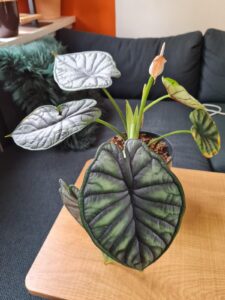
As we observe the natural world around us, we often discover wonders that leave us in awe. One such marvel is the captivating movement of prayer plants, a group of houseplants that include Calatheas, Marantas, and Ctenanthes. These plants, known for their dramatic leaf movements, have long fascinated both plant enthusiasts and casual observers alike.
In a mesmerizing time-lapse video, we witness the remarkable dance of these plants as they raise and lower their leaves in a rhythmic pattern throughout the day. This behavior, known as nyctinasty, is a response to the changes in light levels, and it’s a captivating sight to behold.
Time-lapse shows how much Plants actually move throughout the day
byu/freudian_nipps inwoahdude
The Calathea Ornata, a particular variety of prayer plant, was highlighted in the video, showcasing its constant and fluid movements.
“Those are just not any plants. Those particular plants move quite a bit,” remarked one observer. “I had a Calathea Ornata (the one in the bottom left corner) and the plant was moving constantly.”
The reason behind this mesmerizing display lies in the plant’s unique cell biology. The leaves of prayer plants are equipped with specialized cells that swell and contract in response to changes in light and temperature. As the cells deform, they cause the leaves to rise and fall, creating the illusion of a plant in motion.
“The cell biology is such that the cells deform with sunlight to cause the movement,” explained one commenter.
“We would never attribute this to the plant having choice or agency. Why, then, do we assume human cells are any different? Are our cells not just undergoing similar biological, chemical reactions (albeit, many, many more of them)? Why do we assume we have consciousness or choice?”
This insightful observation highlights the fascinating parallels between the movements of plants and the complex workings of the human body.
While we may often assume that our own actions are the result of conscious choices, the science behind prayer plant movement reminds us that much of our own bodily functions are governed by similar biological mechanisms.
The beauty of prayer plants’ movements is not lost on those who have witnessed it.
“Nature truly is beautiful,” remarked one commenter, while another expressed surprise, saying, “I had no idea plants moved that much.”
Indeed, the prayer plant’s graceful dance is a testament to the wonders of the natural world.
These plants, with their delicate leaves that seem to “pray” in sync with the day’s cycle, have captivated the hearts and minds of many.
RELATED: My Top 5 Beautiful Houseplants
Why do prayer plants move their leaves?
The movement of prayer plant leaves, known as nyctinasty, is a response to changes in light levels. The leaves are equipped with specialized cells that swell and contract in reaction to the amount of light, causing the leaves to rise and fall.
How do prayer plants move their leaves?
The movement of prayer plant leaves is driven by the deformation of cells in the leaves. As the cells swell and contract, they cause the leaves to rise and fall, creating the mesmerizing dance that we observe.
YOU MIGHT ALSO LIKE: Creating a Pinterest-Worthy Plant Home







